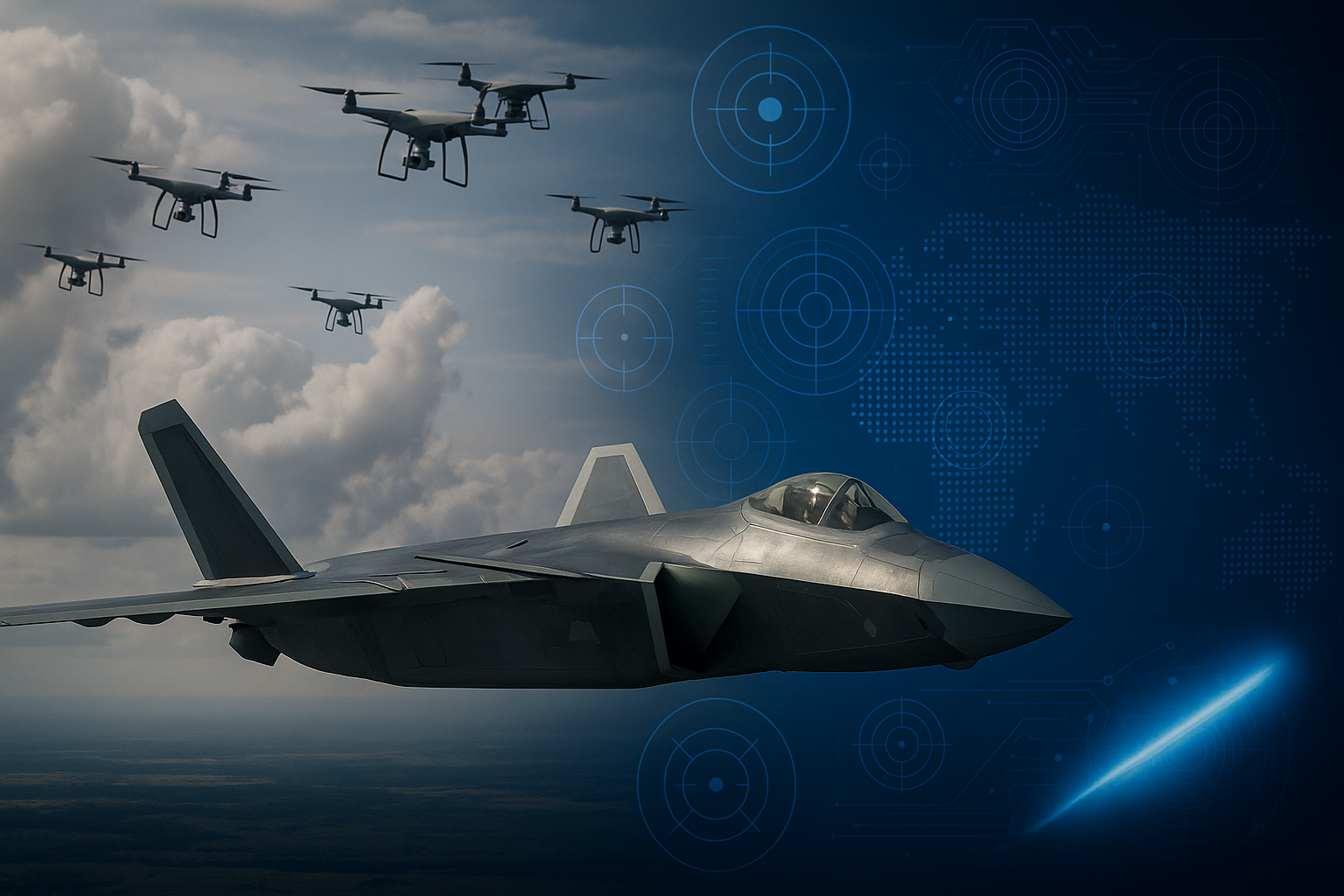J-20 At Airshow Signals China’s Stealth Focus, Drone Counter-Swarm Plans Underscore Changing Warfare

China’s J-20 stealth fighter at the Changchun Airshow showcased advancing variants and signalled a broader PLA focus on countering drone swarms and embracing next generation warfare.
The decision to place a J-20 stealth fighter on static display at the 2025 Changchun Airshow, following a flight demonstration, offered analysts and the public a rare, up-close view of China’s flagship fifth-generation design and underlined a broader shift in PLA thinking toward integrated, system-level responses to emerging threats such as mass drone swarms.
Seen in detail for the first time, the J-20’s lift-body layout with canards and strake wings was on full display: fully movable canards and vertical tails that contribute to a high lift-to-drag ratio and enhanced maneuverability.
Observers noted exceptionally smooth surfaces, tightly processed rivets and seams, and airframe shaping that minimizes right angles and maintains parallel edges — all deliberate choices to reduce radar cross-section and enhance low observability.
Chinese experts highlighted the public unveiling of incremental variants (J-20A and J-20S) as evidence that baseline J-20 technologies are continuing to mature, signalling that China’s stealth fighter program is moving beyond demonstration to fielded operational capability.
That craftsmanship and visible engineering maturity matter strategically. The J-20’s combination of aerodynamic control (canards, strakes) and stealth shaping suggests a platform intended for contested-airspace operations where survivability and agility matter together, not merely sensor stealth.
For potential adversaries and regional planners, the static display reduces uncertainty about China’s airpower trajectory and raises questions about fleet numbers, basing, and integration with wider PLA aerospace networks.
Crucially, the airshow spectacle occurred alongside a growing PLA focus on countering another asymmetric challenge: low-cost, large-scale drone swarms.
Naval researchers led by Professor Guo Chuanfu have proposed a layered “counter-swarm” architecture — a digital-age Great Wall — that fuses satellite, airborne, shipborne, and sea-surface sensors with AI-driven fusion and a “dynamic kill net” to detect and defeat swarms.
Their August 22 paper warns that commercially available components can produce thousand-strong swarms at per-unit costs in the low thousands of dollars, creating an attacker advantage that could overwhelm traditional ship defenses.
The linkage between the J-20’s maturation and counter-swarm planning is doctrinal: both reflect a PLA move from single-platform dominance to system-of-systems warfare.
The proposed naval approach emphasises pre-emptive and cost-efficient options — attacking launch platforms, midcourse jamming, and scalable directed-energy interceptors (lasers, high-power microwaves) — to avoid the economically unsustainable practice of using million-dollar missiles against thousand-dollar drones.
For regional security, the combined message is clear. Visible advances in platforms like the J-20 increase China’s air combat credibility, while ambitious counter-swarm programs indicate an institutional recognition that future conflicts will hinge on integration, AI, and new effectors rather than platform count alone.
Planners should expect more tight coupling between advanced manned platforms, unmanned sensing networks, and directed-energy weaponry, a shift that will reshape doctrine, procurement, and deterrence calculus across Asia and beyond.







